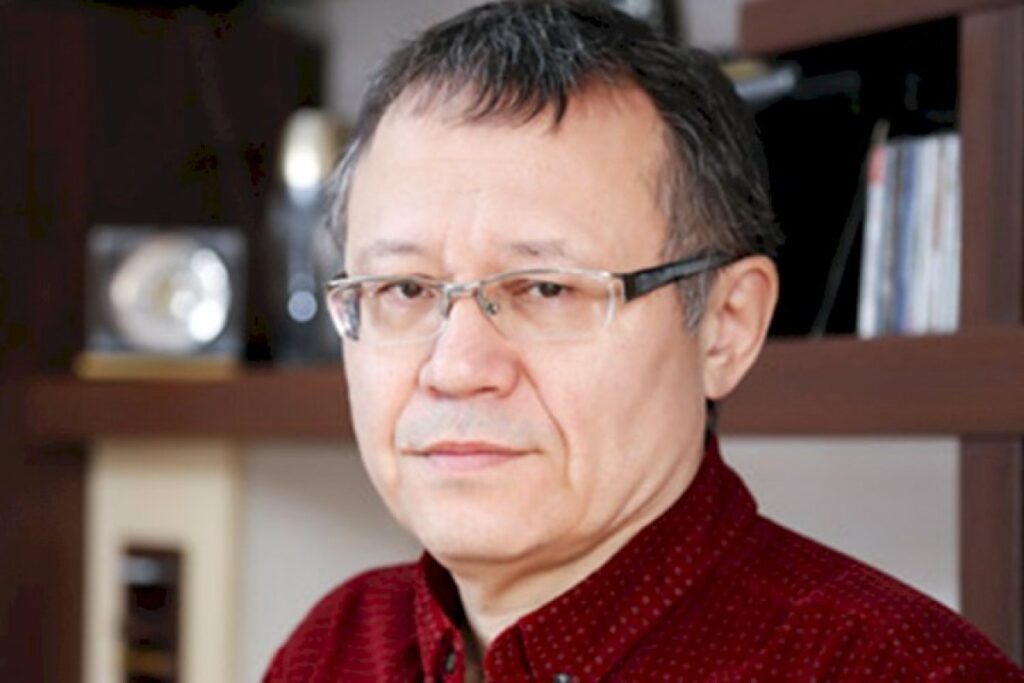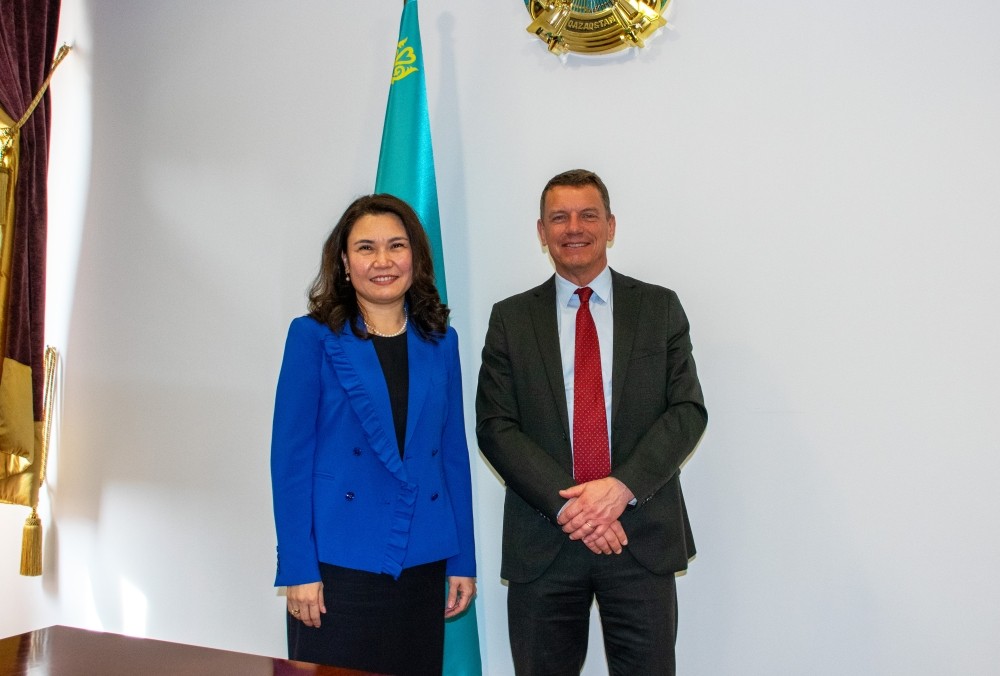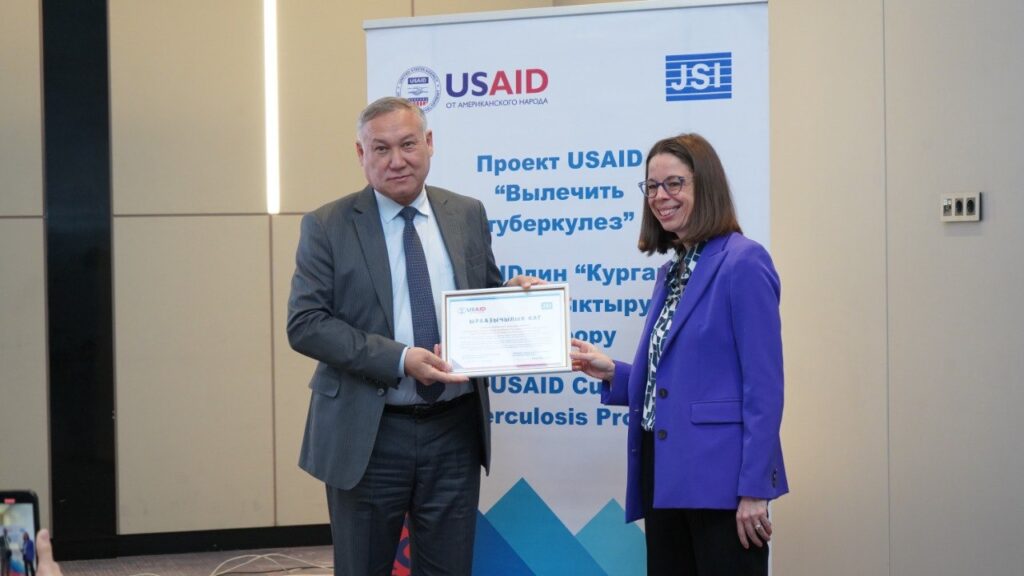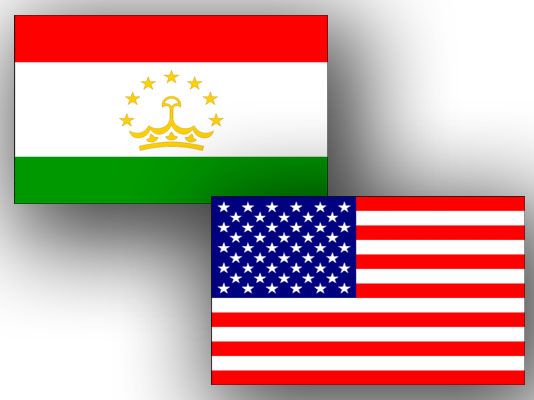Kazakhstan’s film industry is attracting more and more attention globally, and many talented actors are contributing to its development. One such theater and film actor is Abay Kazbayev, who agreed to share his experience and vision of the industry.
How did you start in the industry?
I have no specialized education, but I’m constantly learning. I started to explore a career path as an actor at the age of 33, after trying my hand in many different fields. I’m now actively engaged in developing my range, from plasticity to internal monologue.
To date, I’ve worked on series such as Shahristan, Upperty, and Shabashniki. Shooting the latter, I had to shave my head for the role, which looked strange. In general, I like to experiment on the image. It’s interesting to observe the change of type. I also worked on two theater projects, on one of which I was lucky enough to work with Saulius Varnas, a European theater director. He staged the play, A House in the Middle of Spring, based on Eugene Ionesco’s script, Hunger and Thirst. On this project, I worked with such professionals as Marat Amiraev, Altynshash Shayakhmetova, Sharim Dostay, and others. In my second theater project, I had the lead role, but, unfortunately, we managed to stage just one private performance.
(Shakhrisatn is a Kazakh detective thriller from 2023; Marat Amiraev is a famous Kazakh actor who starred in such series as 5:32 and Prisoners; Altynshash Shayakhmetova is a Kazakh actress who starred in such series as Boztorgai and Bir Toksan.)
How do you perceive the evolution of Kazakhstan’s cinematography over the past decades? What key changes have taken place, in your opinion?
It is difficult to talk about decades, as ten years ago, I was in a completely different sphere. But I can say that coming to the movie theater I can now watch one or two of our domestic films, which certainly pleases me. Ten or twenty years ago, the release of a Kazakhstani film in theaters was something of an event, but it’s now become the norm. Many people criticize our movies for being limited to comedies and crime dramas but I for one, greatly enjoy movies such as Business in the Kazakh Way. It is still too early to talk about (local movies) as an industry, since to my mind, it doesn’t exist as such. Having said that, we have plenty of people engaged in creating movies: directors, producers, actors, – actors turned directors, actors turned producers, and vice versa.
A highlight for me, was the movie Nomad. Released about twenty years ago, it ignited the dreams of many aspiring artists many of whom have since made a name for themselves, including Sanjar Madi, who starred in many of its scenes.
Other key events include Akan Satayev’s The Racketeer which came out a few years after Nomad, followed by Farhat Sharipov’s The Tale of the Pink Hare. Both provided a wave of new faces and young blood to the movie community.
Movies in genres other than comedies and crime do exist; perfect examples being Harmony Lessons by Emir Baigazin and Taraz by Nurtas Adambay. However, movies are not cheap to produce and costs must be recouped. It is apparent that our audiences love a laugh. We have therefore exploded the distribution of Kelinka Sabina and Business, and over the last ten years, to meet demand, there has been a tendency for Kazakhstan’s films to concentrate solely on comedy.
But things are changing and over the last two years, viewers have shown a readiness to watch other genres. This is evidenced by the movie Dastur by Kuanysh Beisek. Classified as drama/horror on the kino.kz website, it broke the box office record set by Business and is now considered the highest-grossing Kazakhstani movie.
I would like to point out that extensive publicity played a major role. If I am not mistaken, 40 million tenge was allocated for marketing. It is no longer enough to produce a high-quality movie or to be recognized as a good actor. For example, I was at a screening of the movie I Was Promised You by Hovhannes Hovhannisyan. The quality was very high, the story was unusual and based on real events, but there were only 6 people in the audience. In contrast, because seats were sold out, we had to wait several days to watch Dastur.
Since media attention is clearly a key to success, I subsequently enrolled on the course “Self-Agent” by casting director Nadine Tsoi.
Returning to genre diversity, we should of course note Aisultan Seitov’s debut movie Kash. My many acquaintances and friends did not like the movie, but to me, it was deeper than it seems, and the words expressed by one of the characters, “The steppe only seems flat”, will stay with me for life.”
What themes and motifs have become more relevant in Kazakhstani cinema given the current social, cultural, and political changes in the country?
I think movies and TV series are always a reflection of cultural and political changes in the country. At a base level, the series Meow is about drug misuse, Fraudsters is about fraudsters, and the series Sake is about corruption.
If you dig deeper, for example, into Meow, the movie has strong female roles unlike those previously reduced to a few archetypes of the nice obedient girl or the kind affectionate mum, and characters defined by their relationship to men; the protagonist’s mother, mistress, wife etc. That trend is now slowly changing. In the series The First Negative by Salem social media, for example, the two main characters are girls, brilliantly performed by actresses Zarina Karmen and Indira Sabirova.
I think the portrayal of women has long related to the agenda that it is difficult for women to live in our society. They are expected to cook and bring up children but also have time to work, always look good and be in a good mood, never contradict their husbands and so on. It is as if their voice has been taken from them, not considering the terrible statistics on domestic violence against women.
Thankfully, modern TV series and movies now include characters and stories where women can both express and manifest themselves. On this topic it is important to note that whilst the movie Bakyt by Askar Uzabaev, is about domestic violence, it is not one-sided and the woman who is a victim of violence, also appears to feed on it.
On another matter, in modern society there is a lot of talk and reflection on the topic of decolonization, which are addressed in Kash by Aisultan Seitov.
What role does Kazakhstani cinema play in the formation and preservation of national identity? Are there specific features that distinguish Kazakhstani cinema from other cinematic traditions?
I think our cinema is still at the stage of forming its own cinematic language. The director Adilkhan Yerzhanov, whilst not familiar to mass audiences is revered by European film critics for his creation of pictures referencing the Bible and various artforms including Fine Art.
There are probably no actors in Kazakhstan, and perhaps Russia, who would not want to star in one of his films. His pictures have their own, as it is now fashionable to say, ‘vibe.’ However, most of his pictures are gloomy. In my opinion, they all explore the same theme; the question of some kind of formation or adaptation of man in society. As a rule, society tries to adjust itself, so to speak, to isolate the personality, after which the man fights back, sometimes losing sometimes winning, sometimes winning at the cost of his life.
I think it is too early to talk about specific features of our cinema. Many people criticize our comedies for their grotesqueness or absurdity, but that is part and parcel of the genre.
In general, I do think we have something to give to the world. I like the way Yerbolat Bedelkhan, producer of Ninety One and member of Orda, discusses this topic. He has commented that in the West they have already filmed everything they could sing about themselves. Then came a wave of popularity in hip-hop culture, where African Americans presented themselves and their culture, followed by a huge wave of Asian music, in particular Korean music. The time has now come to present Turkic and nomadic culture to the world, and who will do it if not us?
How do you think Kazakhstani cinema influences the global cinematic environment? Are there any films or directors from Kazakhstan that have been recognized abroad?
Yes, of course there are. Adilkhan Yerzhanov, whom I mentioned earlier, won the Asia-Pacific Film Award, also known as the Asian Oscar, for his film Black, Black Man. At the Venice Festival, the film Goliath also won an award and his movie Rhinoceros, renamed Steppenwolf for Western audiences, is now being screened at festivals.
Talking of actors, Samal Yeslyamova won the Palme d’Or at Cannes for best actress; the first, if I’m not mistaken, to take the award for our country. Daniyar Alshinov received an award at the Venice festival for his role in Goliath, and the French series Infinity starring Daniyar Alshinov and Samal Yeslyamova, was nominated for an Emmy in 2023.
Although it is too early to talk about any impact on world cinema, Kazakh actor Askar Ilyasov is now actively involved in Russian projects and taking on interesting roles. There is a paradigm that only actors of European appearance are shot in Russian cinema, with Asians given roles of delivery workers, cab drivers and so on. But as Askar’s filmography shows, the paradigm is shifting.
What are the challenges facing Kazakhstan’s cinematography today, and what development prospects do you see for the industry in the immediate future?
The culture of paid content has only just begun to emerge in our country. It used to be deemed ridiculous to pay for music or movies and consumers, including myself, were of the opinion; “I already pay for the Internet and should get everything there for free”.
Once again, times are changing and since subscriptions to music, movie and TV series streaming services are being actively bought, it is time to establish a market for Kazakhstani streaming platforms. We also have lack of cinemas and there are issues concerning the transparency of disbursement of funds by the Cinema Fund. In fact, there are many problems and challenges.
I am, however, glad that the current head of Kazakhfilm, Azamat Satybaldy, is pulling up young directors and producers. For example, amongst his consultants are director Kuanysh Beysek, whom we talked about earlier, and QARA studio producer Yerkebulan Kurishbaev, one of the authors of the OYU project. I hope that fresh minds will positively influence the development of our cinema.
As previously mentioned, the development of marketing is essential. People need to be informed of new releases, not only through the rotation of trailers, but also via promotion on social networks, as brilliantly demonstrated by the Dastur.
How do you assess the interaction of Kazakhstani cinema with other cultural industries such as literature and music? Are there any examples of successful cooperation in this area?
Cinema, music, and literature, are probably the industries that are closest together. Alongside growth in cinema and music, it is gratifying to see Kazakhstani movies imbued with Kazakhstani music. As for literature, it too, is integral to film, not least since many books are adapted for the screen. Here it is important to note that director Farhat Sharipov’s films Personal Growth Training… and Scheme were based on Daniyar Surgalin’s novel ‘Bricks 2.0’ and Zara Esenaman’s novel ‘Scheme.’ Neither however, in common with “The Tale of the Pink Hare” are known to mass audiences.
As for music, the most interesting collaborations are probably between Galymzhan Moldanazar and Adilkhan Yerzhanov, and I rate the atmosphere created by songs by Ashi Prince (V$XV PRINCE) in the serial Meow, 10 out of 10.
What genres or trends in Kazakhstani cinema are the most promising today? Are there any new trends that you observe in the industry?
It is no secret that comedies are the most popular in Kazakhstan. But again, the movie Dastur proved that other genres can also break records at the box office. Perhaps we should expect a wave of horror movies aimed at the box office. Of course, we shoot other genres besides comedies, but as a rule, many of them are ignored.
How do you think Kazakhstani cinema can continue to develop to remain relevant and competitive in the global cinematic space?
I think the country’s administration needs to think about investing in film and music and recognize the importance of soft power. And at the same time, it is also very important that creators are given the freedom to create.
The case of Salem social media is a good example. When state money was invested in this project and the guys were allowed to create, the development of serial history received a huge boost. The management has now changed and only time will tell how that will affect the quality of content.
So, it all comes down to investment and freedom of action. We have a lot of people who want to make high quality movies, interestingly thought out and so on. Amongst them is a wave of young independent indie cinema, due I suspect, to the coming of age of a generation born into a modern and independent Kazakhstan.
What Kazakhstani movies would you recommend to a person who is not familiar with Kazakh cinema?
That is an interesting question which of course, depends on individual preferences. But here are a few suggestions:
Contemporary, cutting-edge films, Mountain Onion by Eldar Shibanov; dark brooding films, Black, Black Man and Goliath by Adilkhan Yerzhanov; crime films, Rayons and Racketeer by Akan Satayev; drama, Farah by Abay Karpykov, brash comedy, Zhanym, you won’t believe it! by Yernar Nurgaliyev, sport,, Paraolympian by Aldiyar Bayrakimov; romance, Station of Love by Talgat Temenov and the sequel of 2018, Station of Destiny by Yernar Nurgaliyev.
Glossary:
“Kazakh Business”, “Business” is a 2016 Kazakh comedy film directed by Zheniskhan Momyshev.
“Nomad” is a 2005 Kazakh-French co-production.
“The Racketeer” is a 2007 Kazakhstani feature film directed by Akan Satayev in the genre of crime drama.
“The Tale of the Pink Hare” is a Kazakhstani feature film made in 2010 at the Shaken Aimanov Kazakhfilm studio.
“Taraz” Kazakh film, in the genre of action, the famous director Nurtas Adambaev.
“Kelinka Sabina” – a series of cult Kazakhstani feature films,








